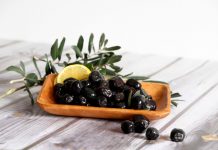A huaya is a peculiar fruit, native to the tropical zone near the Orinoco River, found in Colombia and Venezuela. Its tree can reach about 20 meters in height and growing relatively easily in the tropical and subtropical climate. It has spread to other parts of Central America as well as certain Caribbean islands.
Perhaps you do not know it by this name, since it is known differently depending on the region in which we are. Quenepa and "mamoncillo" are a few well-known examples. It is known as "Spanish lime," despite not being neither lime nor from Spain in the US. Its scientific name is Melicoccus Bijugatus.
What is Huaya?
This plant from the Sapindáceas family, to which lychees also belong, has traditionally been used as a natural remedy by local populations who had access to it. Its fruits have health benefits, but also the seeds, leaves, and bark of these trees are utilized to obtain medicines for different mild ailments.
Read also: How to Make Kombucha at Home
The huaya fruit resembles a lychee in appearance. It also has fine, rough skin, in this case, green. It contains a sweet and orange or yellowish pulp, which is very acidic if it has not yet matured well. This pulp is firmly linked to the fruit's huge seed in the middle, so it is usually consumed by sucking the fruit's flesh until the seed is exposed.
The amount of pulp is relatively small in each fruit, but it can also be boiled to separate it from the seeds and make drinks or jams with a sweet but not cloying taste. You can even eat the seed if it is roasted, mashed, and combined with honey.
Also, recently this fruit has attracted the attention of the scientific world. Most of the world's population had been unaware of it because of its poor economic importance. Still, recent years have increased its consumption accompanied by research into its dietary advantages and potential medical applications.
In this article, we'll discuss a few of the benefits of consuming huaya, its value as an edible fruit, and some of its therapeutic uses, as described by the local populations that consume it regularly.

Nutritional and medicinal properties of this fruit
On a nutritional level, the huaya surprises us with some unusual nutrients for fruits. The components that this fruit presents make it provides us with certain health benefits just from taking it, but it also has medicinal uses separate from its consumption for food.
Good for Losing Weight
In a serving of about 100 grams of huaya pulp, we will find only 58 calories. Its low amount of carbohydrates and zero in terms of fat make it the ideal fruit to include in our diets when looking for sweet and tasty alternatives that do not contain a high amount of sugar.
Also, the difficulty of its consumption (you have to entertain yourself for a while with each fruit) produces a satiating effect, calming our hunger more than other foods much easier to consume.
Good Supply of Vitamins A and C
Vitamins A and C are found in abundance in huaya. Both have antioxidant properties, which help us to reduce inflammatory processes and even reduce our risk of suffering from diseases influenced by inflammation, such as some types of cancer.
The health of our skin and mucous membranes as well as the health of our eyes depend on vitamin A. Vitamin C helps us better assimilate nutrients such as iron or calcium, necessary for our bone health and avoid anemic processes. Also, good levels of vitamin C translate into better immune system function. We have no lack of reasons to consume this fruit!
Source of Iron, Phosphorus, and Calcium
The levels of phosphorus and calcium in this fruit are really high , which helps enormously to maintain a good general state of health, especially about the nervous system and our bones and teeth.
Also, it has the advantage of containing iron well above the levels of other fruits, which helps us fight anemia and low blood pressure. In addition to having high vitamin C levels, this fruit provides us with many essential nutrients while facilitating its absorption and use.
Improves Sleep and Emotional Stability
The essential amino acid tryptophan is used by our body to generate neurotransmitters, such as serotonin. The consumption of tryptophan is related to an improvement in depressive symptoms and a stabilization of emotional changes, especially those related to hormonal peaks, such as those that occur in pregnancy or during menstrual cycles.
Also, tryptophan has been seen to significantly improve sleep quality, helping us fall asleep more easily and make our rest more restful. Fortunately, Huaya is packed with a ton of tryptophan, so its regular consumption can provide us with all the benefits related to this useful amino acid.

Rich in Antioxidants
In addition to its high content of vitamins A and C, which have antioxidant properties in themselves, huaya also contains several phenolic compounds with powerful antioxidant action. Good antioxidants in the diet can regulate inflammatory processes in the body while protecting us from the harmful effects of reactive oxygen species (ROS).
Also read: 10 Healthy Benefits of a Dragon Fruit
Antioxidants' benefits are rather debatable, but it is believed that they play an important role in reducing cellular aging. They prevent the appearance of cancer cells, whose genesis is connected to the body's oxidative stress. Additionally, antioxidants lower the risk of cardiovascular disease.
Regulates Digestion
On a medicinal level, huaya is used mainly to regulate digestion. Its seeds can be consumed roasted and mixed with honey to cut diarrhea, which drinks made from the bark of this tree also have.
Also, its leaves are prepared in infusion or suppository (depending on the region) to help remedy chronic constipation. More research is required on these medicinal properties of huaya.
Adapted and translated by The Cop Cart Staff
Sources: Azsalud







